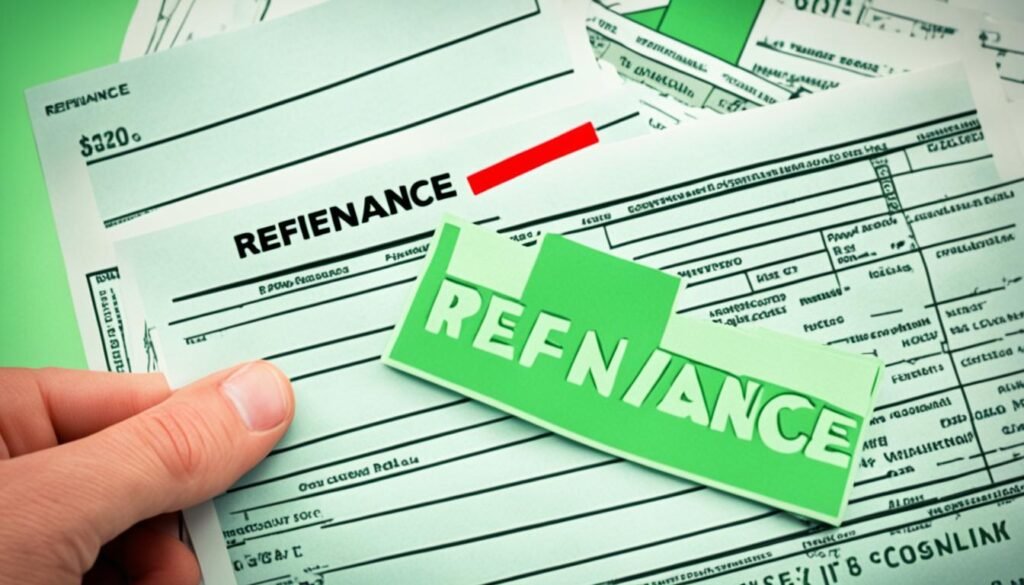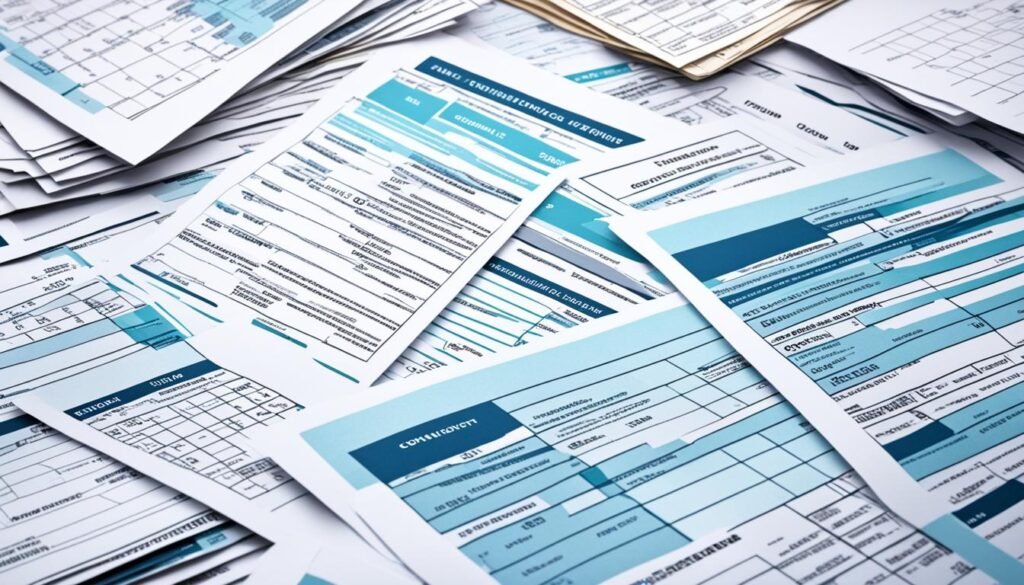Refinance Student Loans Navigating the complex world of student loan repayment can be daunting, but one strategy that can provide significant financial relief is refinancing your student loans. This process involves trading in your existing loan(s) for a new loan with a private lender, often at a more favorable interest rate. By doing so, you can potentially save thousands of dollars over the life of your loan, either through reduced monthly payments or the ability to pay off your debt more quickly.
Refinancing offers a range of benefits, including the opportunity to secure a lower interest rate, adjust your loan term, consolidate multiple loans into a single payment, and even release a cosigner. However, it’s important to weigh the potential drawbacks, such as the loss of access to federal loan benefits and protections. To maximize your savings and make an informed decision, it’s crucial to understand the tradeoffs and eligibility requirements when considering refinancing your student loans.
Key Takeaways
- Refinancing student loans can provide significant savings by potentially securing a lower interest rate.
- Borrowers can choose to shorten or extend their loan term to optimize their monthly payments and total interest paid.
- Consolidating multiple loans into a single payment can simplify loan management and reduce the risk of missed payments.
- Eligibility for refinancing is typically based on factors such as credit score, income, and debt-to-income ratio.
- Timing your refinance decision can be crucial, as the current interest rate environment and federal loan policies may impact the potential benefits.
Understanding Student Loan Refinancing
Student loan refinancing is a strategic financial move that allows borrowers to replace their existing student loans, whether federal or private, with a new loan from a private lender. This process can unlock a range of potential benefits, from securing a lower interest rate to simplifying loan management.
What is Student Loan Refinancing?
At its core, student loan refinancing involves trading in your current student loan(s) for a new loan with different terms and conditions. This new loan is provided by a private lender, such as a bank or online financial institution, and typically offers the opportunity to obtain a lower interest rate than your original loan(s).
Benefits of Refinancing Student Loans
The primary benefits of refinancing student loans include the potential to reduce your interest rate, shorten or extend your repayment term, consolidate multiple loans into a single monthly payment, and even release a cosigner from the loan obligation. By lowering your interest rate, you can save a significant amount of money over the life of the loan. Refinancing can also simplify your financial management by combining multiple student loans into one, making it easier to keep track of your payments and due dates.
Refinance Student Loans to Reduce Interest Rates

Securing a lower interest rate is one of the primary reasons borrowers choose to refinance their student loans. By refinancing, you can potentially trade in your existing federal student loan(s) for a new loan with a significantly lower interest rate, which can save you thousands of dollars over the life of the loan. The amount you save depends on factors like your current interest rate, the new refinanced rate, and the loan amount.
How Lower Interest Rates Save You Money
Reducing your interest rate can have a substantial impact on the total cost of your student loan debt. For example, if you have $50,000 in student loan debt at an interest rate of 6.8% and a 10-year repayment term, you would pay over $15,000 in total interest. However, by refinancing your student loan to a 5% interest rate, you could save nearly $4,000 in interest charges over the life of the loan.
Comparing Fixed vs. Variable Interest Rates
Lenders typically offer both fixed and variable interest rates for refinanced student loans, each with their own advantages and disadvantages. Fixed-rate loans provide the stability of a consistent interest rate over the entire repayment term, while variable-rate loans may start with a lower rate but can fluctuate with market conditions, potentially resulting in higher payments in the future.
| Interest Rate Type | Advantages | Disadvantages |
|---|---|---|
| Fixed Interest Rate |
|
|
| Variable Interest Rate |
|
|
Shorten Your Repayment Term

Refinancing to a shorter repayment term, such as 5 or 7 years, can maximize your savings when it comes to refinancing student loans. By paying off your loans faster, you can significantly reduce the total interest paid over the life of the loan. This strategy can be particularly beneficial for borrowers with a manageable loan amount who are seeking to aggressively pay down their student loan debt.
Maximizing Savings with a Shorter Term
Consider the following example: If you have $36,406 in student loan debt at 4.66% interest and a 10-year repayment term, you would pay a total of $9,208 in interest over the life of the loan. However, by refinancing to a 5-year term at a lower interest rate of 2.59%, your total interest paid would be just $2,447, a savings of $6,761. This dramatic reduction in interest costs can make a significant difference in the life of the loan and your overall financial well-being.
Considering Monthly Payment Increases
While a shorter repayment term can maximize savings, it’s important to consider the impact on your monthly payments. Refinancing to a 5-year or 7-year term will likely result in a higher monthly payment compared to your current 10-year or 15-year term. Carefully evaluate your budget and financial situation to ensure you can comfortably afford the increased monthly obligation. If needed, explore options to lower your monthly expenses or increase your income to accommodate the higher payments.
The decision to refinance your loans with a shorter term should be based on your unique financial goals and circumstances. By weighing the potential savings against the impact on your monthly budget, you can determine the optimal solution for refinancing your federal or private student loans.
| Loan Details | Original Loan | Refinanced Loan |
|---|---|---|
| Loan Amount | $36,406 | $36,406 |
| Interest Rate | 4.66% | 2.59% |
| Repayment Term | 10 years | 5 years |
| Total Interest Paid | $9,208 | $2,447 |
| Monthly Payment | $380 | $646 |
By refinancing to a shorter repayment term, you can maximize your savings and pay off your student loans more quickly, ultimately freeing up funds for other financial goals. However, it’s essential to carefully consider the impact on your monthly budget and ensure you can comfortably manage the increased payments.
Extend Your Repayment Term

While shortening the repayment term can maximize your savings, some borrowers may opt to refinance student loans with a longer term, such as 15 or 20 years. This strategy can help lower your monthly payments, which may be beneficial if you’re struggling to fit your current student loan payments into your budget.
Lowering Monthly Payments with a Longer Term
For example, refinancing $36,406 in student loan debt from a 10-year term at 4.66% interest to a 15-year term at 2.59% interest would reduce the monthly payment from $380 to $345, a savings of $35 per month. This can provide much-needed relief for borrowers facing financial constraints, allowing them to better manage their student loan debt and other expenses.
Understanding the Trade-off in Total Interest Paid
While a longer loan term can lower your monthly payments, it’s important to consider the trade-off in total interest paid over the life of the loan. Extending the repayment period means you’ll be paying interest for a longer duration, potentially resulting in a higher overall interest cost compared to a shorter term. Borrowers should carefully evaluate their financial goals and calculate the long-term savings using a student loan refinance calculator to determine the best option.
Simplify Student Loan Management

Refinancing your student loans can also help simplify the management of your debt. By consolidating multiple loans into a single new loan, you can streamline your financial responsibilities and potentially save time and headaches.
Consolidating Multiple Loans into One
When you refinance your loans, you have the opportunity to combine all your existing student loans – whether federal or private – into a single new loan. This can make it much easier to keep track of your payments and due dates, reducing the risk of missing a payment or incurring late fees.
Streamlining Payments and Due Dates
Instead of juggling multiple student loan payments each month, refinancing allows you to have a single monthly payment. This can help you better manage your student loan debt and ensure you never miss a due date, potentially saving you money in the long run.
Refinance Student Loans to Release a Cosigner

Refinancing student loans can provide the opportunity to release a cosigner from the loan obligation. This can be a beneficial move for both the borrower and the cosigner, as it removes the cosigner’s liability for the debt. This option can be particularly helpful if the borrower’s financial situation has improved since the original private student loan or federal student loan was taken out, allowing them to qualify for refinancing on their own.
By refinancing, the borrower can apply for a new loan with a private lender, potentially at a lower interest rate and on more favorable terms. This can enable them to take over the full responsibility for the loan, freeing the cosigner from any future obligations. This can be a valuable option for borrowers who have built up their credit score and financial stability since initially needing a cosigner to secure their original student loans.
Releasing a cosigner through refinancing can offer peace of mind and improved financial flexibility for both parties involved. The borrower gains the independence to manage their student loan debt independently, while the cosigner is no longer tied to the liability. This can be an important consideration for borrowers looking to optimize their financial situation and take greater control of their refinance student loans.
Eligibility Criteria for Refinancing

When considering refinancing your student loans, it’s crucial to understand the eligibility criteria set by private lenders. These requirements play a significant role in determining whether you can qualify for a refinanced loan and the terms you may be offered.
Credit Score Requirements
One of the primary factors lenders evaluate is your credit score. Typically, lenders will require a minimum credit score of around 650 or higher to qualify for student loan refinancing. Your credit history and credit report are closely reviewed, as they provide insight into your financial responsibility and creditworthiness.
Income and Debt-to-Income Ratio
In addition to your credit score, lenders will also assess your income and debt-to-income ratio. They want to ensure you have the financial capacity to make the new loan payments. A low debt-to-income ratio, which compares your monthly debt obligations to your income, can improve your chances of qualifying for refinancing.
Degree Completion and Employment Status
Many private lenders also have requirements related to your educational background and employment status. They may require that you have completed your degree and are currently employed, as these factors can directly impact your financial stability and ability to repay the refinanced loan.
By understanding these eligibility criteria, you can better evaluate whether you qualify for student loan refinancing and take the necessary steps to improve your chances of securing favorable terms.
Timing Your Refinance Decision

When deciding if and when to refinance your student loans, it’s important to consider the current interest rate environment. Refinancing is most beneficial when you can secure a significantly lower interest rate than your existing loan(s). This is typically the case when market interest rates are low, as they have been in recent years. However, with the federal student loan repayment pause set to expire in 2023, borrowers with federal loans may want to wait to refinance federal student loans until they have a clearer understanding of any potential changes to their loan terms or eligibility for government programs.
Current Interest Rate Environment
The interest rate environment is a crucial factor to consider when evaluating the best time to refinance your federal or private student loans. When market rates are low, refinancing can provide significant savings by securing a lower interest rate on your new loan. Conversely, when rates are higher, the potential benefits of refinancing may be diminished, and it may be more prudent to wait until rates decrease again.
Federal Student Loan Repayment Pause
The ongoing federal student loan repayment pause, which has been in effect since March 2020, has provided relief for millions of borrowers by temporarily suspending loan payments and interest accrual. As this pause is set to expire in 2023, private student loan borrowers may want to closely monitor any updates or changes to federal loan programs before deciding to refinance federal student loans. This will help ensure they make the most informed decision about the optimal time to refinance your federal student debt.
Also Read: The Advantages and Pitfalls of Consolidating Student Loan Debt
Conclusion
Refinancing student loans can be a powerful financial tool to save money, simplify loan management, and potentially improve your overall financial situation. By securing a lower interest rate, you can reduce the total amount paid over the life of the loan. Borrowers can also choose to shorten or extend their repayment term to maximize savings or lower their monthly payments, depending on their financial goals and budget.
Whether you’re looking to refinance your student loan, consolidate multiple loans, or lower your interest rate, it’s essential to understand the eligibility criteria, benefits, and potential drawbacks of refinancing. By carefully evaluating your credit score, income, and debt-to-income ratio, you can determine if refinancing is the right choice for you and your federal student loans or private student loans.
Ultimately, refinancing can be a valuable strategy to reduce your student loan debt and improve your financial well-being. By considering the current interest rate environment and the federal student loan repayment pause, you can make an informed decision on the best time to refinance your student loans and take advantage of the available student loan refinancing options.
FAQs
Q: What does it mean to refinance your student loan?
A: Refinancing your student loan involves taking out a new loan to pay off your existing student loans. This new loan usually comes with different terms, such as a new interest rate and repayment schedule.
Q: How do I find a lender to refinance my student loans?
A: You can search online for reputable refinance lenders or use comparison websites to explore different options. It’s important to research and compare offers to find the best deal for your situation.
Q: Is there a calculator available to help me determine if refinancing is right for me?
A: Yes, many refinance lenders offer online calculators that can help you estimate how much you could save by refinancing your student loans. These calculators take into account factors such as interest rates and loan terms.
Q: What is the difference between a variable rate and a fixed rate when refinancing student loans?
A: A variable rate can fluctuate based on market conditions, while a fixed rate remains the same throughout the life of the loan. Choosing between the two depends on your risk tolerance and financial goals.
Q: Can I refinance my private student loan as well as federal loans?
A: Yes, many lenders offer the option to refinance both private and federal student loans into a single loan with a new interest rate and repayment terms. However, refinancing federal loans may result in the loss of certain federal benefits.
Q: What are some of the best student loan refinance companies in the market?
A: Some popular student loan refinance companies include SoFi, Earnest, and CommonBond. It’s recommended to research and compare different lenders to find the best fit for your needs.
Q: How can I qualify for student loan refinancing?
A: Qualifying for student loan refinancing typically requires a good credit score, steady income, and a strong credit history. Lenders may also consider factors such as debt-to-income ratio and employment status.
Source Links
- https://www.savingforcollege.com/article/pros-and-cons-of-student-loan-refinancing
- https://www.cnbc.com/select/student-loan-refinancing-saves-money/
- https://www.nerdwallet.com/article/loans/student-loans/what-is-student-loan-refinancing





